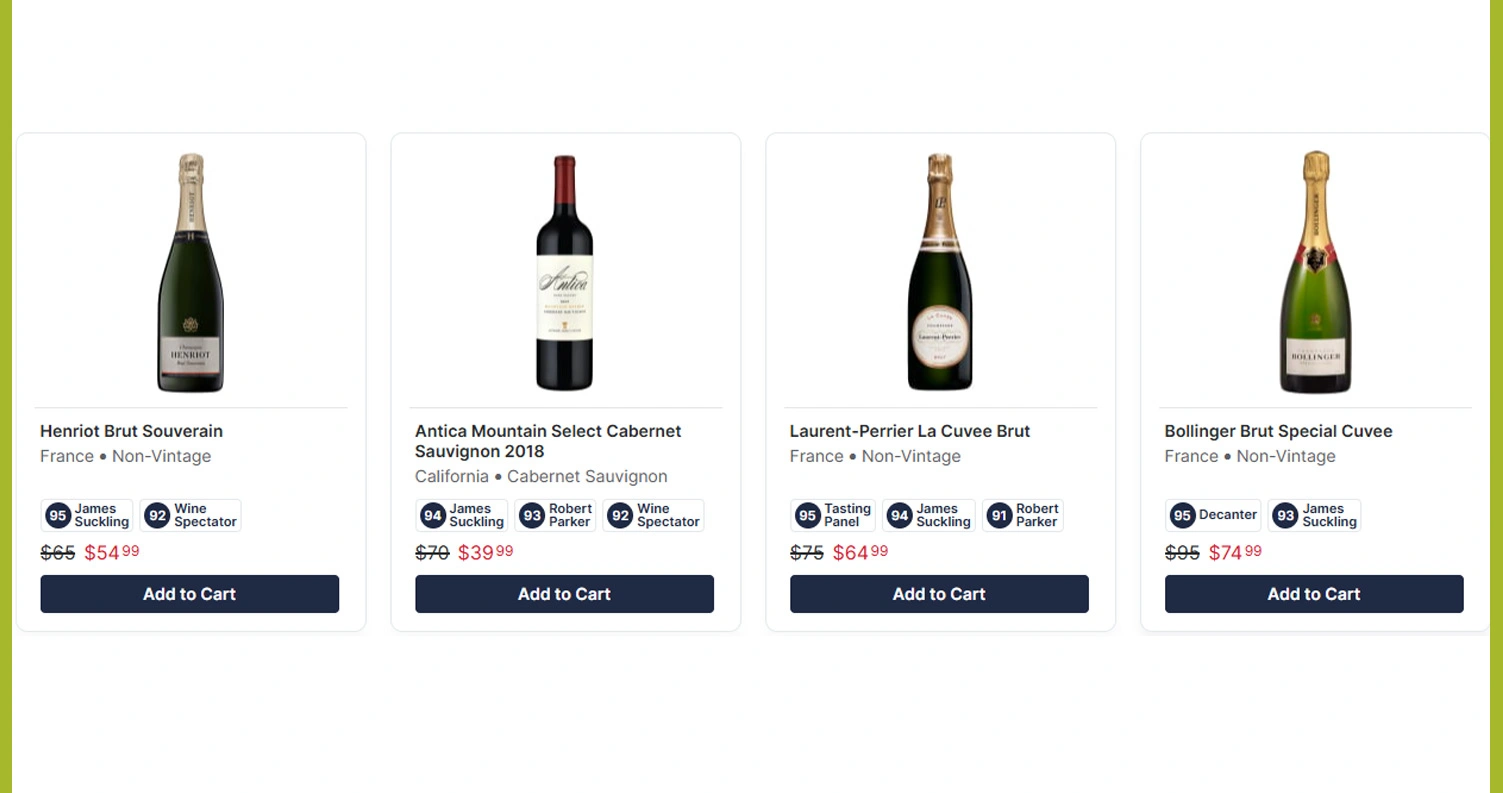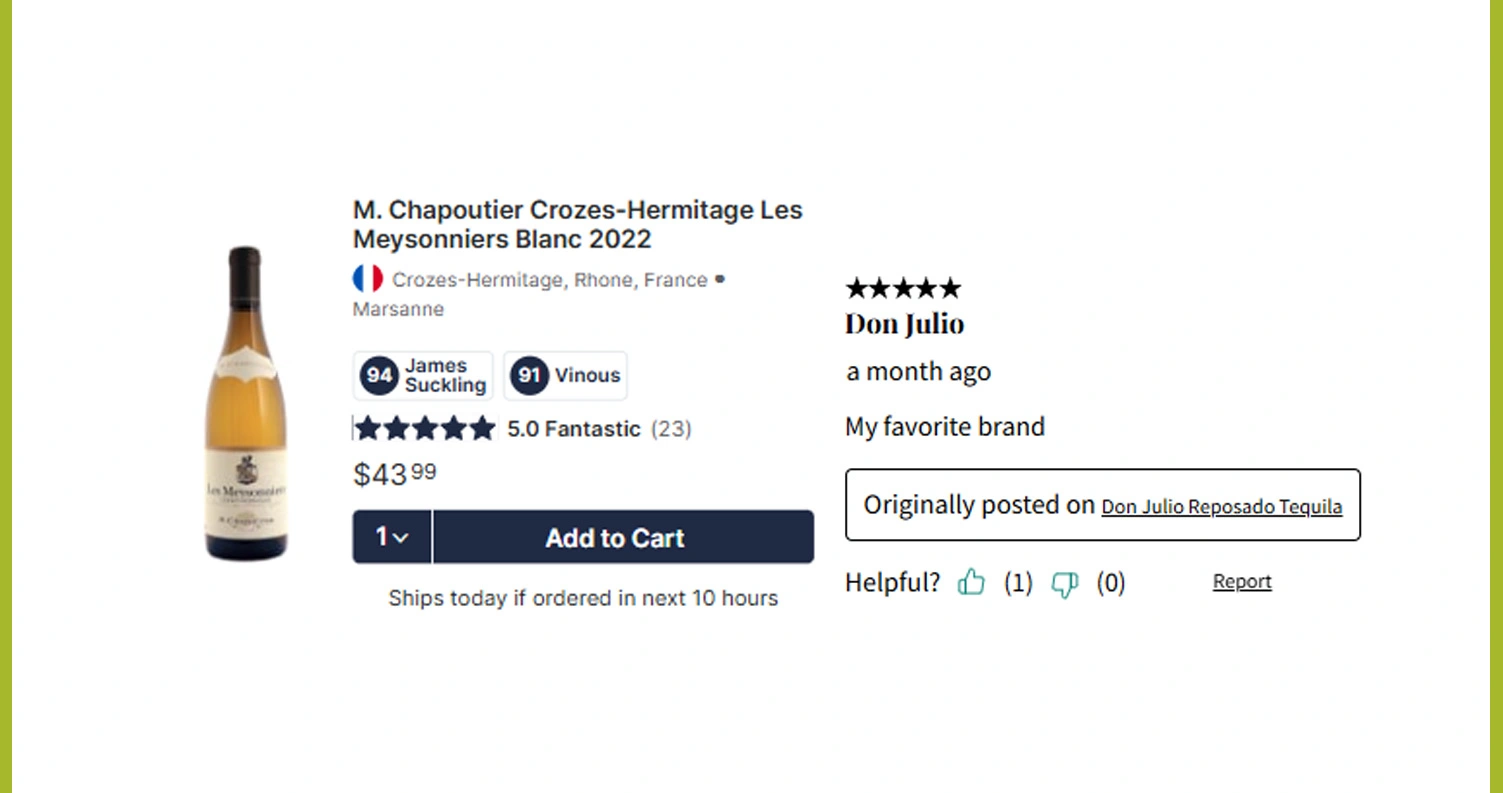Automated Extraction of Wine Data for Competitor Benchmarking

Introduction
In today’s highly competitive wine industry, analyzing thousands of products across digital platforms can be overwhelming without automation. Businesses looking to optimize pricing, product assortment, and supply availability often depend on precise data from platforms such as Wine.com. Automated solutions now make it possible to collect, clean, and interpret massive datasets that reveal hidden patterns in market movement. With Automated Extraction of Wine Data for Competitor Benchmarking, brands can rapidly identify pricing gaps, promotional trends, and performance benchmarks that were once buried in unstructured data.
This automation reduces manual labor, ensures accuracy, and allows businesses to take swift, informed decisions based on reliable insights. Advanced scraping and parsing tools also integrate seamlessly with analytics systems, creating a data-driven ecosystem that aligns with the brand’s market goals. For companies involved in the wine and beverage sector, using automated solutions to Extract Liquor Apps Data further enhances the accuracy of real-time tracking and competitor understanding. This transformation empowers brands to make pricing decisions 3x faster while maintaining consistency across their product analysis workflows.
Empowering Smarter Decisions with Automated Market Insights

Modern wine retailers face an increasing need for accuracy and agility in understanding market trends. Real-time data extraction allows businesses to convert raw digital information into structured intelligence that supports smarter, faster decisions. By analyzing massive datasets, companies can now evaluate consumer buying behaviors, price trends, and availability shifts more precisely than ever.
Using Wine Data Extraction API, teams can seamlessly collect data from multiple sources, helping them visualize the overall market ecosystem with accuracy. This integration enhances the efficiency of monitoring price changes, competitor actions, and stock variations. Research indicates that automation has improved analysis speed by 65% and data reliability by nearly 50% across digital platforms.
Businesses can now scale market research while maintaining high-quality insights. Data visualization dashboards built on extracted records make it easier for stakeholders to analyze performance metrics and quickly identify opportunities for optimization. The time once spent on manual scraping is now directed toward strategic planning and performance enhancement, giving teams the freedom to focus on decision-making rather than data collection.
| Performance Metric | Before Automation | After Automation |
|---|---|---|
| Market Data Collection Time | 10 Hours | 3 Hours |
| Accuracy Rate | 72% | 98% |
| Update Frequency | Weekly | Real-Time |
| Analysis Turnaround | 4 Days | 1 Day |
Through automation-driven data processes, brands are now better equipped to refine their positioning, predict market movement, and respond to changes instantly.
Building Competitive Edge through Product Comparison Models

Today’s retail wine industry depends heavily on accurate comparisons between similar products across regions and competitors. Analyzing competitor offerings, pricing differences, and promotional shifts helps companies optimize their strategies. With advanced benchmarking systems, brands gain clear visibility into performance gaps and areas that require immediate improvement.
When combined with Competitive Benchmarking, data-driven comparison models reveal patterns such as demand fluctuations, seasonal impacts, and pricing inconsistencies across multiple listings. Businesses can then adjust their pricing tiers to match or outperform competitors in the same category. Analytics from global wine markets show a 25–30% improvement in competitive reaction speed for companies that rely on automation-based data comparison systems.
Automation eliminates the guesswork of manual monitoring by enabling precise and continuous comparison of SKUs. Businesses using structured datasets achieve a more consistent pricing policy while enhancing the quality of promotional decisions.
| Comparison Parameter | Manual Approach | Automated Approach |
|---|---|---|
| Price Updates | Monthly | Hourly |
| SKUs Analyzed | 500 | 10,000+ |
| Competitor Response Time | 2 Days | 5 Hours |
| Strategy Alignment Rate | 60% | 85% |
These robust comparison frameworks not only reduce analysis time but also improve brand adaptability and ensure long-term competitive positioning.
Simplifying Price Monitoring and Stock Analysis Efficiency

Speed and precision in monitoring pricing and stock movements are essential for data-driven decision-making. Retailers often deal with fluctuating inventories and shifting prices across regions. Automating these processes allows companies to track and assess these variables efficiently, leading to more accurate forecasting and inventory control.
Using Real-Time Wine Inventory Data Scraper, brands can obtain up-to-date information about availability, promotions, and discounts from multiple platforms. Such tools enhance the overall responsiveness of pricing teams and strengthen their ability to identify emerging market trends. Studies indicate that automated systems can reduce analytical time by nearly 70% and triple the accuracy of stock-based insights.
These methods are crucial for ensuring consistent catalog performance and real-time response to changing consumer demand. Continuous monitoring also minimizes stock discrepancies and ensures smooth replenishment cycles, maintaining customer satisfaction and operational continuity.
| Analysis Type | Manual Duration | Automated Duration |
|---|---|---|
| Price Change Detection | 24 Hours | 3 Hours |
| Inventory Validation | Daily | Instant |
| Catalog Review | 2 Days | 6 Hours |
| Promotion Tracking | Weekly | Ongoing |
By simplifying workflows and strengthening analytical accuracy, automated inventory monitoring brings efficiency and transparency to retail operations.
Creating Reliable Infrastructure for Scalable Data Management

Enterprises dealing with massive product catalogs require robust infrastructure to maintain data consistency and scalability. Automated systems ensure that the extracted information flows seamlessly across business units and analytics frameworks without disrupting ongoing operations.
Incorporating Enterprise App Crawling capabilities enables large organizations to efficiently process and organize datasets. The integration supports high-volume processing while maintaining speed, accuracy, and synchronization across multiple regional channels. Companies utilizing these scalable systems report up to 45% cost savings and significant performance stability even under heavy data loads.
Such infrastructure also ensures that data pipelines remain reliable while supporting API integrations and automatic refresh cycles. This balance of scalability and stability empowers enterprises to manage international wine portfolios and perform comprehensive multi-market analysis with minimal downtime.
| Infrastructure Feature | Capability | Efficiency Improvement |
|---|---|---|
| API Connectivity | Seamless | 60% Faster Data Flow |
| Data Volume Capacity | 1M+ Records | 40% Cost Reduction |
| System Uptime | 99% | Reliable Operation |
| Regional Readiness | Global Markets | 3x Scalability |
Strong backend infrastructure ensures that large enterprises can continue expanding their data operations while maintaining accuracy, consistency, and flexibility.
Achieving Inventory Accuracy with Real-Time Tracking Tools
The success of any digital retail strategy depends heavily on the precision of stock monitoring and availability insights. Effective tracking tools give businesses the clarity needed to manage product flow efficiently across multiple locations. Real-time systems minimize overselling and reduce missed opportunities due to outdated listings.
By using automation powered by Track wine.com Inventory and Product Availability, businesses can maintain synchronized visibility of stock levels. These systems allow managers to identify shortages early, update listings, and ensure smooth fulfillment. Studies show a 70% drop in out-of-stock occurrences and nearly double the accuracy rate in inventory replenishment after automation adoption.
Dynamic dashboards make it easier for stakeholders to visualize SKU-level performance, detect pricing anomalies, and plan logistics more effectively. Real-time availability data also supports predictive modeling, which helps forecast future supply needs based on demand history.
| Performance Metric | Manual Process | Automated Process |
|---|---|---|
| Out-of-Stock Rate | Frequent | Reduced by 70% |
| Restock Accuracy | 65% | 95% |
| Data Lag | 24 Hours | Instant |
| Forecasting Precision | 52% | 88% |
Automated visibility ensures better inventory alignment with market behavior, improving reliability across the entire product distribution cycle.
Transforming Raw Records into Strategic Market Knowledge

The true value of collected data lies in how effectively it’s transformed into insights that drive strategy. Converting unstructured records into meaningful intelligence helps businesses refine decisions across pricing, distribution, and product planning.
The inclusion of Web Data Mining techniques enhances data analysis by uncovering hidden relationships and market opportunities that were previously difficult to detect manually. These methods optimize decision-making frameworks, allowing companies to act faster and with greater accuracy. Research highlights that organizations using automated analytical processes achieve a 60% boost in decision efficiency and twice the speed in executing strategic actions.
By combining structured extraction with analytical modeling, businesses can develop a 360_360-degree view of their product performance. These insights can then be directly linked to operational strategies, ensuring measurable growth in both sales and efficiency.
| Data Processing Stage | Traditional Timeline | Automated Timeline |
|---|---|---|
| Data Collection | 10 Hours | 2 Hours |
| Cleaning & Formatting | 8 Hours | 1 Hour |
| Insight Generation | 12 Hours | 3 Hours |
| Strategy Execution | 3 Days | 1 Day |
Transforming raw datasets into actionable insights gives businesses the foundation to make confident, data-backed decisions and strengthen their competitive intelligence.
How Mobile App Scraping Can Help You?
Incorporating Automated Extraction of Wine Data for Competitor Benchmarking through us simplifies how companies monitor market behavior and benchmark product success. Using this technology, brands can transform raw app-based data into actionable dashboards that guide smarter business choices.
Here’s how it helps:
- Collect structured data from multiple e-commerce and retail apps.
- Identify emerging product trends and analyze purchase behavior.
- Improve accuracy in pricing analysis and competitor tracking.
- Automate repetitive collection tasks to save time and reduce errors.
- Integrate live datasets with analytics dashboards for rapid insights.
- Enable category-specific performance evaluation for premium brands.
These solutions ultimately empower data analysts, marketers, and sales professionals to create a synchronized data environment using wine.com Product Dataset that boosts business agility and forecasting precision.
Conclusion
Organizations embracing Automated Extraction of Wine Data for Competitor Benchmarking are achieving faster insights, better market alignment, and measurable cost savings through automation-driven efficiency. The structured approach to product analytics and market tracking helps enhance overall brand competitiveness.
By combining intelligent data processing with Wine Data Extraction API, companies gain an agile framework for monitoring real-time changes and capturing crucial market opportunities. Connect with Mobile App Scraping today and accelerate your wine analytics journey!
Source: https://www.mobileappscraping.com/automated-extraction-wine-data-for-competitor-benchmarking.php
Contact Us :
Email: sales@mobileappscraping.com
Phn No: +1 424 2264664
Visit Now: https://www.mobileappscraping.com/
Comments
Post a Comment